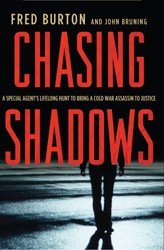The Man Who Saw Everything begins with an accident. It’s 1988 and Saul Adler is hit by a car while crossing Abbey Road. Body scraped, brain rattled, it’s unclear how much damage has been done, but while his aches and bruises linger, life goes on. As Saul recounts the events of the days, weeks, and years following the accident, it becomes apparent the car knocked something loose within him. Dazed and out of sync with the present, he confuses German with English, receives phone calls from other decades, slips Beatles lyrics into his recollections, and finds himself able to recall information from the future: the Berlin Wall will fall, he will one day grow three different types of tomatoes in a garden he doesn’t yet own. For the first half of the novel, these frequent time slips are perplexing, but clarity comes in a poignant reveal. To be any less opaque would spoil the plot and Deborah Levy’s craftsmanship.
While Saul may be addled and his memory faulty, Levy’s writing is clear and affecting. Drawing on The Beatles, Socialism, the enduring traumas of being Jewish in Germany, and the convoluted relationship between artist and muse, Levy weaves an impressive novel that sweeps and jumps across decades. This may sound like dense reading, but The Man Who Saw Everything is graceful and lean, with Levy’s silvery language cutting right to the point, even when her characters can’t seem to.
Saul may be the man who saw everything, but he is unwilling to acknowledge the truths in front of him. In Eastern Germany, where tins of pineapple are coveted, blue jeans a rarity, privacy non-existent, and surveillance rampant, Saul remains defiantly Western and inconsiderate. Saul, in his mother’s pearls and blue eyeliner, is not uncaring. He loves deeply, but wields his love, throwing his lovers’ lives off course with his self-centered recklessness.
Though Saul seems intent on telling his story with candor, he is constantly reframing the past, coloring his own recollections by omissions both intentional and accidental. Contested memories are scattered throughout the book. “It’s like this,” Saul says. “No, it’s like this,” responds Jennifer Moreau, his girlfriend at the time of the accident.
After getting hit by the car, Saul and Jennifer set out to recreate The Beatles’ iconic Abbey Road album cover. The photograph of Saul on the famous zebra crossing will be a present for one of his hosts in the German Democratic Republic where he is headed to write about cultural resistance to facism in 1930s Germany. For the picture, Jennifer makes a point to stand on a stepladder just like Iain Macmillan, the original photographer. Jennifer’s commitment to viewpoint and the photo’s framing represents a critical element of Levy’s story. History, how it is told and recast, shifts depending on who focuses the viewfinder. What survives is always colored by the one doing the recalling. Through Saul, Levy co-mingles past and present in a manner that speaks to the slipperiness of memory and of history itself.
It’s like this: The Man Who Saw Everything is a bleak allegory that speaks to how history is inherited. No, it’s like this: The Man Who Saw Everything is a stirring reflection on memory and time that braids together stories of love, socialism, and regret.
Russell Janzen is a New York-based writer and a dancer with the New York City Ballet.





